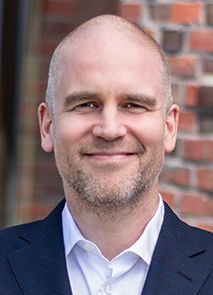
Make Your Professional Service Firm Grow (Part III)
Maximum growth, steady growth and oscillations

Oliver Grasl
30.9.2015
A look at a maximum growth scenario before discussing a more realistic scenario
Maximum Growth, Steady Growth and Oscillations
In my Make Your Professional Service Firm Grow (Part II), I discussed the “Make Your PSF Grow” Game and we took a look at how to achieve the easy cash target. Please review the rules of the game and the discussion in that post before reading on.
Now we know how to achieve the easy cash target, we should move on to the expert target. Reaching this target is closely associated with the question “How much could we make the PSF grow by?”.
The main constraint that stops you from hiring thousands of business developers straight away is that growth costs money: you first have to pay for business development before you start making money with projects. In a real-life situation, you are betting your shareholder's money on the future by hiring many business developers and project delivery staff and hoping that the business developers will manage to acquire the projects your forecast. If they do not, you will go bust. And if they do, and you do not manage to hire the required staff or integrate them well you risk losing a lot of business. So either way, growth is a risky endeavor.
Nevertheless, it is interesting to work out what the maximum possible growth could be. An easy way to work this out is as follows – from the scenarios above we know that whatever we do our cash flow will not increase until month 13. Now if we take a look at month 12 of the base case, then this is how much cash we could use to hire extra staff. We also know that we have to pay for 8 months of the new business developer wages and for two months of the new project wages before revenue starts increasing due to the new hires. So if we hire maximumBusinessDevelopmentHires business developers, the following equation must hold true:

Solving this we arrive at a value of 103 new business developers and thus 412 project staff, given a total of 515 new staff. Try using these numbers in the game – I have added the game for you to play with below, you can also open it in a separate window here.
Something unexpected happens: despite our calculation, our cash actually drops below zero, so in this case, we are bankrupt due to illiquidity.
I have plotted and tabulated the numbers for this scenario below:


Why does this happen?
This is where having a simulation comes in handy – if we take a look at our revenue in month eleven, we see that this is much lower than expected. If you look at the project backlog, we can see why: the number of project weeks actually increases from 320 to 572, though we expected the level to stay at 320. The reason for this is that we can never deliver more projects weeks than are in the project backlog. In our case, the project backlog is at 320. In month eleven, because of the new staff, we would like to deliver 404 weeks of the project, due to the new staff. But there are only 320 weeks in the backlog. On the other hand, thanks to the new business development staff we actually have 143*4= 572 projects incoming. So in month 11, we arrive at 572 net new weeks of projects, but the staff is underutilized for one month.
The table below shows these figures along with the utilization.

There is not much we can do about this because our backlog just is not large enough to deal with so many new staff. What we can do of course is hire fewer people to ensure we do not go bankrupt. Our cash level drops to EUR -70,000, which corresponds to around 7 Staff people. So if we hire 2 fewer business developers and thus 10 people less all together we should be ok.
I have plotted and tabulated the data for this scenario below:


Note that this means we reach our “expert target cash level”, as shown in the graph below:

Is the maximum scenario realistic?
Not really – even if you have had good sales figures in the past, it is unlikely you would bet EUR 10 million of cash on this, even if you could potentially make a surplus of nearly EUR 20 million compared to the base case. After all, your cash level drops to just EUR 250,000 – if the company lost just one project (!) it would be bust. Also, it is not really realistic to grow in such large steps without losing momentum due to training the new employees and constant reorganization to accommodate the growth rate – aspects we have not considered in our model (yet).
A More Realistic Scenario: Steady Growth
A more realistic scenario would be to strive for a continuous growth rate somewhere between 10-25%. In such a scenario, employees are allocated between business development and project delivery as needed.
This scenario is actually quite difficult to handle – I've plotted the graph for the staff and cash development below:


As you can see we achieve very steady growth in personnel – but the cash level drops initially (as expected) then increases, then drops again very aggressively.
What is happening?
This is best explained by looking at the allocation of staff and the backlog of project weeks: first of all, the new hires are assigned to business development. Then new projects start rolling in at quite a rate, so all the staff is assigned to work on projects – in this case, the allocation of business development staff drops below the critical 20% needed to ensure enough projects are acquired in the long run.

Needless to say, the project backlog starts to drop quite quickly and suddenly there are far too few projects in the project pipeline – now all staff is allocated to business development.

This scenario is actually quite common in reality, unfortunately, I know this not only from our clients but also from my own personal experience: what management does is to hire a few business developers when things are going well. Of course, the cash flow immediately gets worse, which always feels bad. So then one does not like to make the decision to hire project staff, because after all, maybe the business developers will not be successful at bringing in new business.
So when new projects finally do roll in, you do not have enough project delivery capacity. So you assign your business developers to project work, which helps in the short run, but unfortunately means you are doing too little project acquisition work … this results in the oscillations evident in the graphs above.
What can you do about this?
The most important thing to do is to ensure that you always have enough staff assigned to business development (20% in this case) – whatever happens. This is much harder to achieve in practice than it sounds because it means you have to reduce your profit in the short run to ensure it is stable in the long run.






Summary and Learnings
How can the discussion above help you to make your professional service firm grow?
For me, there are two key learnings: Foremost, even in a stable environment, achieving high growth rates will cost you a lot of money in the short run and can easily bring your company to the brink of bankruptcy. So, you need to be clear about how much risk you are going to take, how you will measure whether you are on the proper track and what you will do if things start going wrong. If you are managing your own professional service firm, then I think it is also important to ask whether growth is an important goal and why.
The second – and to me, the more significant learning – is that it is easy to fall into the trap of doing too little business development when everything is running smoothly, which then quickly leads to the oscillatory behavior we discussed above.
To mitigate this problem in practice, there are two things you need to do: first, be very disciplined about business development and keep up your effort even when you have too much work. Second, to ensure you can deal with inevitable peaks in utilization, make sure you have trustworthy freelance delivery staff or a network of partner companies that can provide you with extra capacity when you need it.
Workshops
Resources
All Rights Reserved.





